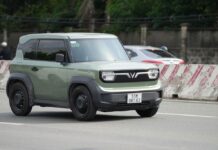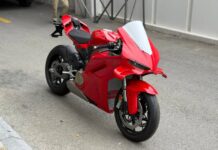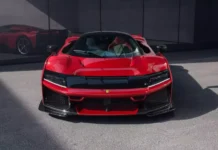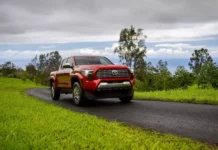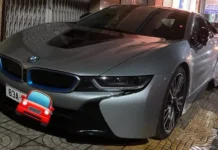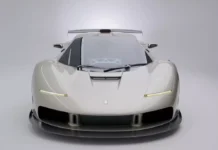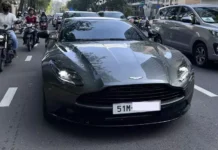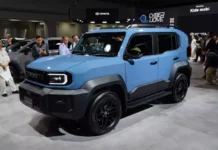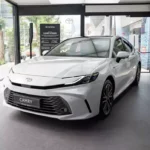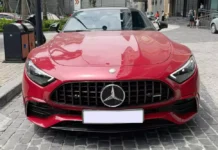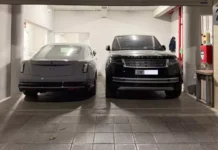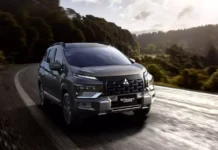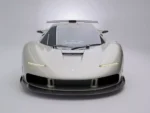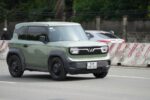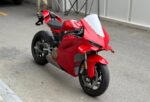Suzuki is a well-established brand in Vietnam, but whether it’s motorcycles or automobiles, the Japanese automaker has always given the impression of being somewhat neglectful. Suzuki products are highly regarded for their quality and durability, but their features and designs sometimes fail to keep up with market trends.
This is particularly evident in the passenger car segment with nine seats or fewer. For instance, in July, almost all of Suzuki Vietnam’s product line-up (four models) appeared on the list of slowest-selling vehicles in the market. The Ciaz sedan was absent from this list, but there are rumors that it will be discontinued, and its sales figures have not been included in recent months.
However, the Japanese automaker appears to have turned a corner with the introduction of the XL7 Hybrid on August 20. The Suzuki XL7 is not a new model; the company has simply equipped it with a hybrid configuration. Notably, this vehicle will replace the Ertiga Hybrid, which is no longer available in Vietnam.
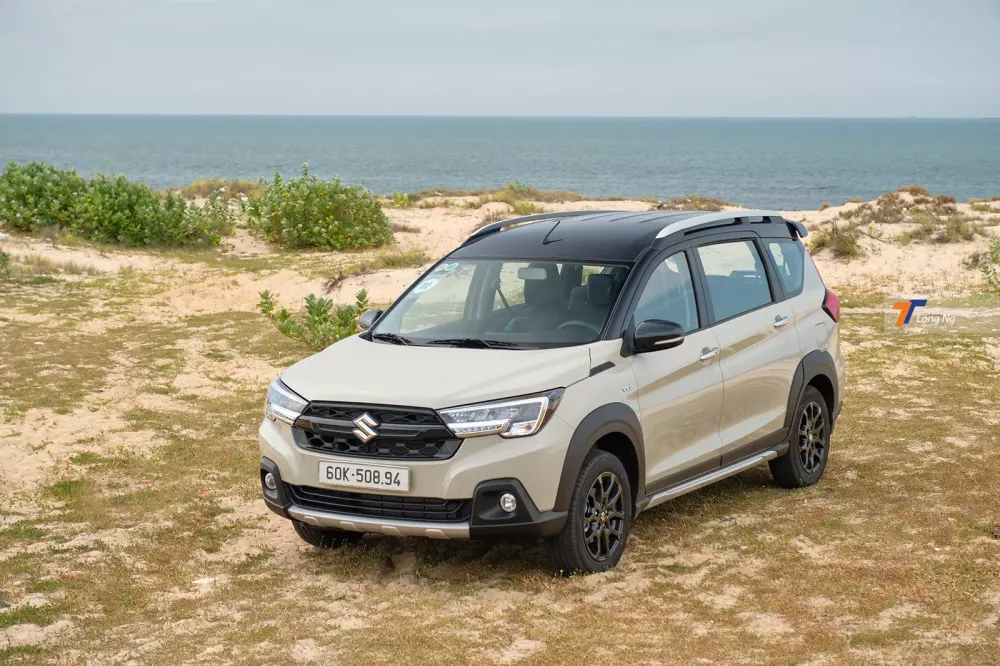
The Suzuki XL7 Hybrid continues to be imported from Indonesia as a completely built unit, and its retail price remains the same as the pure gasoline version at VND 599.9 million. Customers now have the option of a two-tone color scheme for an additional cost of VND 8 million.
Previously, it was puzzling that the Japanese automaker distributed both the Ertiga Hybrid and the XL7 simultaneously, as the two models had somewhat overlapping price points. Furthermore, the XL7 is built on the Ertiga platform but with a design that leans more toward an SUV than an MPV.
With a price tag of under VND 600 million, both models compete in the small seven-seat segment. According to many sales consultants, the majority of customers who come to the showroom to inquire about the Ertiga Hybrid tend to switch to the XL7.

At the launch event for the Suzuki XL7 Hybrid, the Japanese automaker’s representative confirmed that the XL7 and Ertiga Hybrid customer profiles were quite similar. As a result, the company decided to discontinue these two products and focus their resources on the XL7 Hybrid.
So, what makes the Suzuki XL7 Hybrid worthy of the expectation that it will boost the automaker’s sales? Let’s find out through this Suzuki XL7 Hybrid review.
More Attractive Exterior with Subtle Changes
In the past, MPV models typically featured soft, curved lines. However, as Vietnamese consumers’ preferences gradually shifted towards taller vehicles, MPV designs began to incorporate more SUV-like elements, becoming more angular and rugged.
This is one of the reasons why the Suzuki Ertiga Hybrid was not widely popular, while the XL7 attracted more attention. Although it is based on the Ertiga platform, the Suzuki XL7 can be considered one of the most SUV-like designs among affordable seven-seat vehicles.
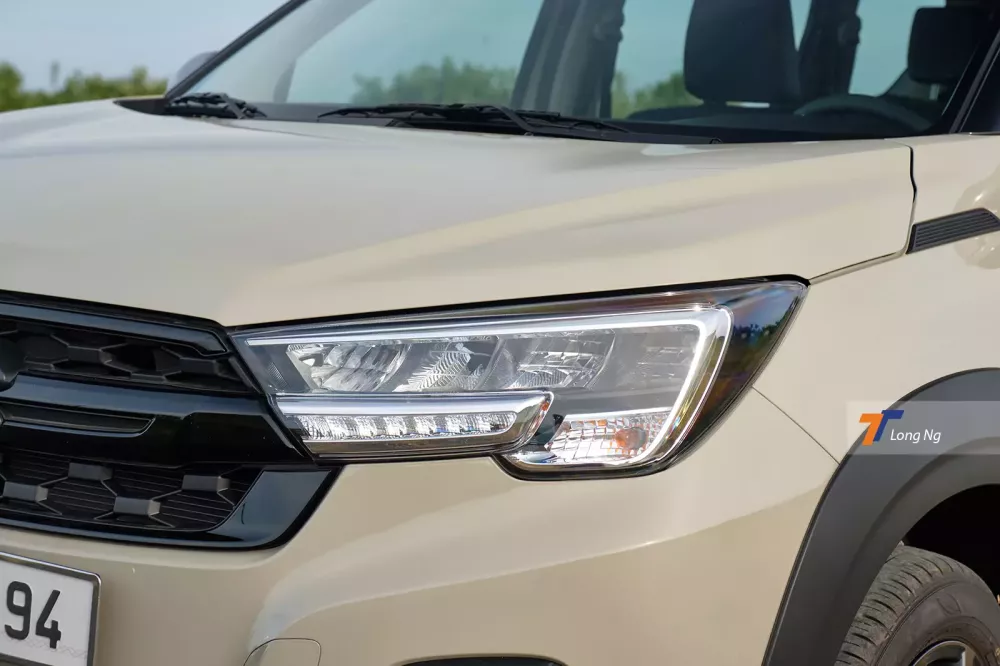
The Suzuki XL7 Hybrid’s front lighting system still uses LED lights but now includes LED daytime running lights and the new turn signal function.
The exterior of the Suzuki XL7 Hybrid differs from the pure gasoline version only in its color options. The company has added a new color and painted several details black, including the grille, alloy wheels, and side mirrors. Many other automakers employ this strategy, and while it is not a groundbreaking change, it does freshen up the vehicle’s style, making it appear more sporty and novel. Additionally, there are some minor adjustments that are very “customer-centric,” such as electrically foldable side mirrors and a standard roof rack.
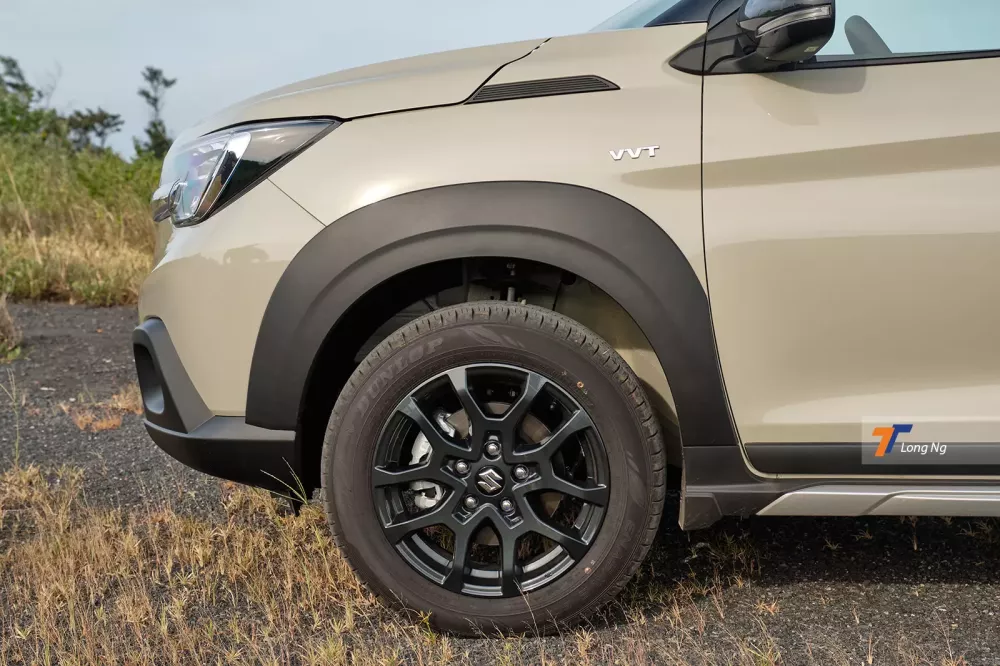
The 16-inch alloy wheels are more robust and feature a black finish.

The side mirrors of the Suzuki XL7 Hybrid can still be adjusted electrically, just like the pure gasoline version, but the new electric folding feature is a welcome addition.

The vehicle comes standard with a roof rack.
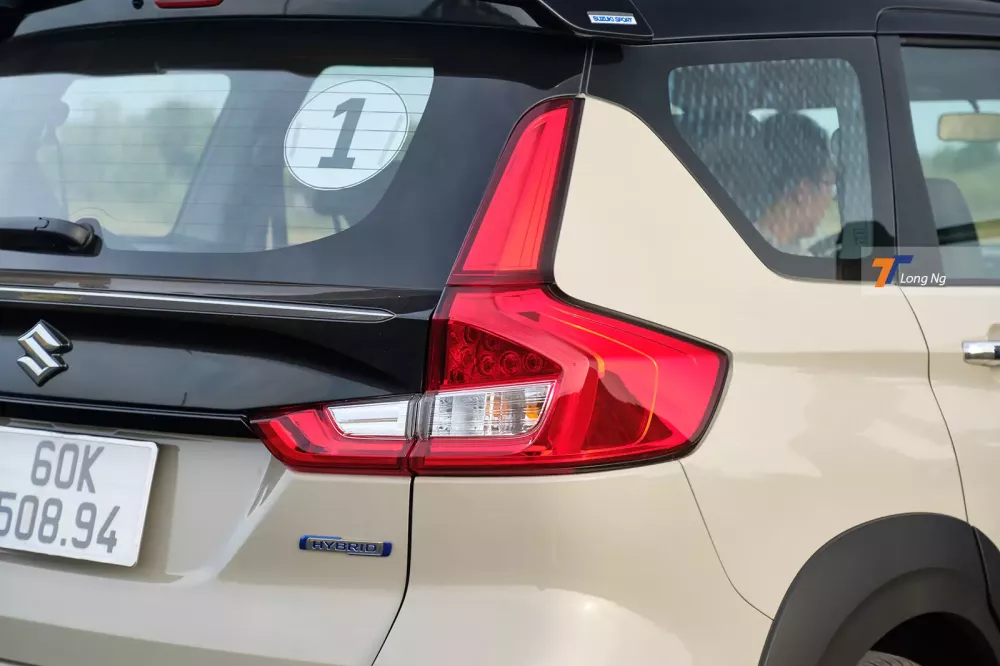
Below the right LED taillight is the new Hybrid logo.
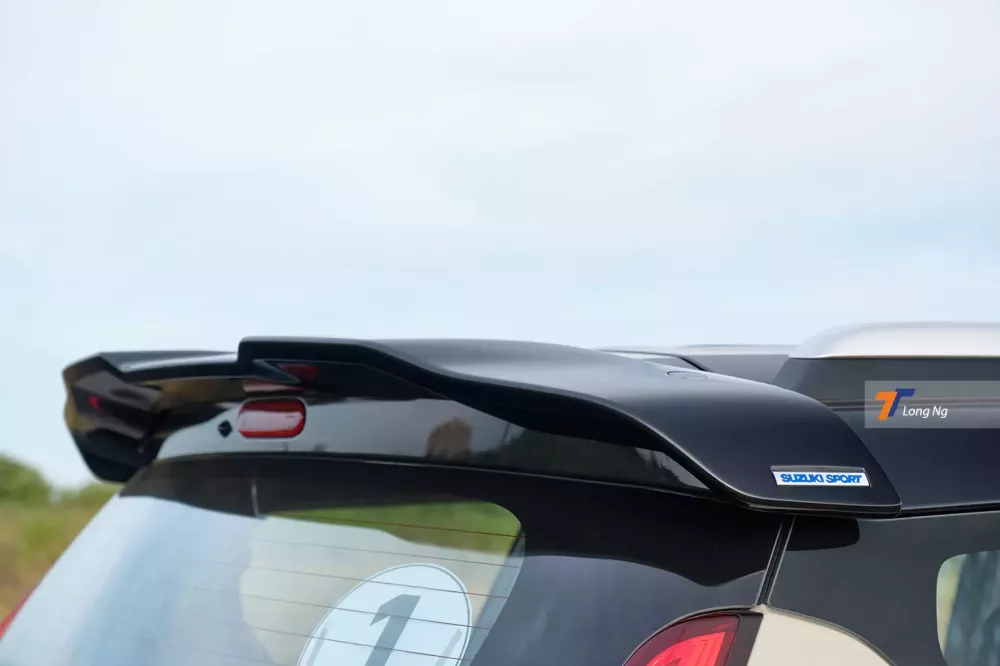
The rear spoiler is more decorative than functional.
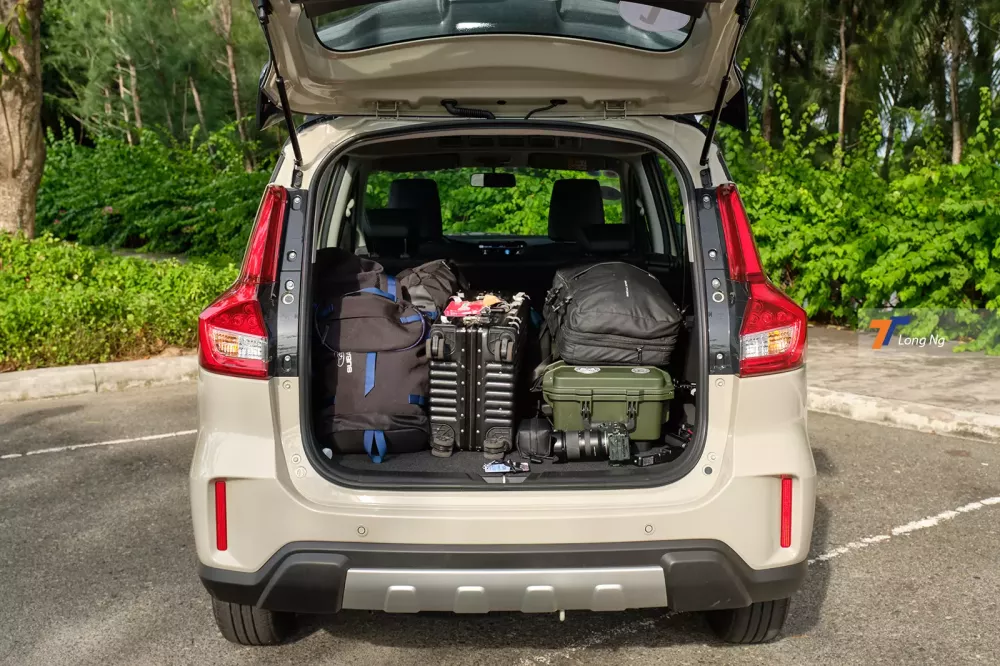
The trunk still uses a manual opening mechanism, and there is ample luggage space when the third row of seats is folded flat.
Interior: Not Eye-Catching but Spacious
The cabin of the Suzuki XL7 Hybrid remains unchanged from the pure gasoline version, except for the addition of darker wood-grain trim. There are only two new convenience features: cruise control and a 10-inch infotainment screen with wireless Apple CarPlay and Android Auto connectivity.
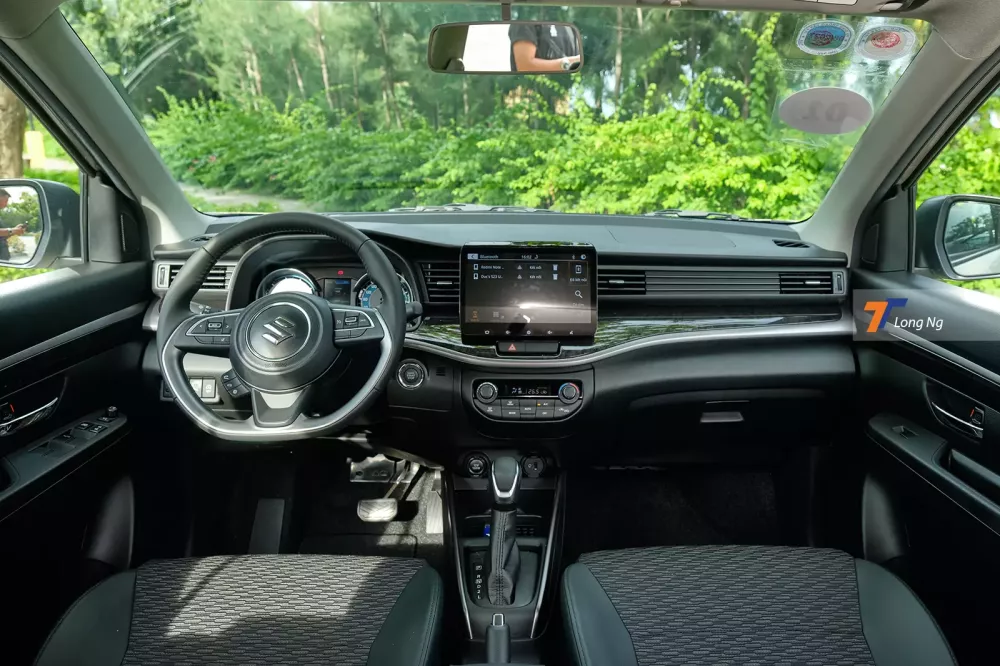
Unfortunately, the Suzuki XL7 Hybrid still comes with fabric seats. If customers want to upgrade to leather upholstery at an external facility, they will have to spend an additional VND 10 million.
Cruise control is not a new feature for Vietnamese drivers, but it remains a practical addition to any automobile. This was also a drawback of the pure gasoline XL7, but the automaker has addressed it in the new hybrid version.
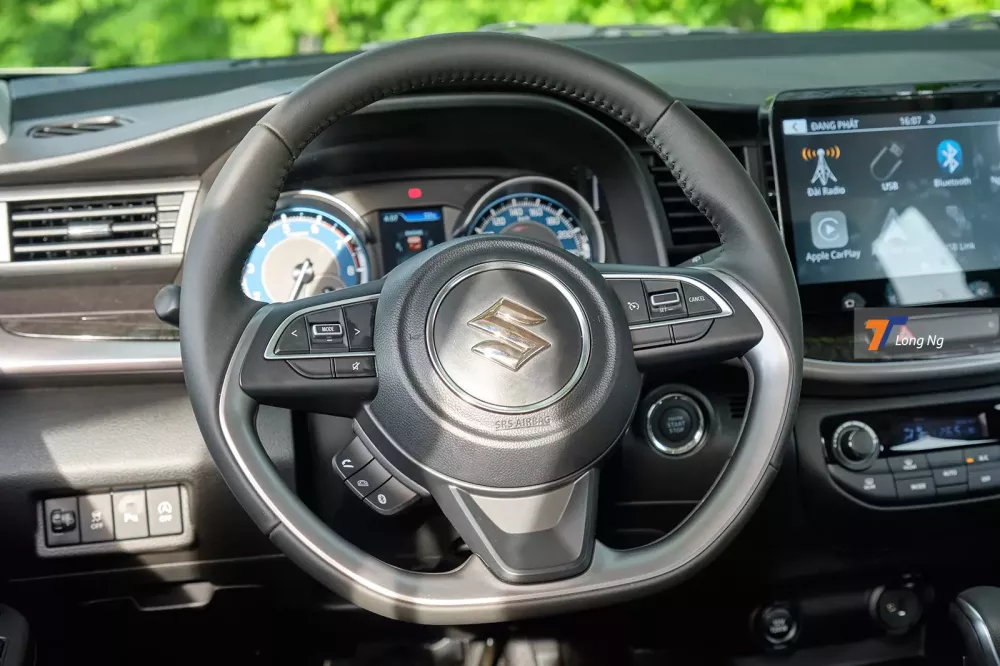
The Suzuki XL7 Hybrid’s steering wheel has a variety of control buttons, including hands-free calling.
Regarding the infotainment system, the Suzuki XL7 Hybrid is currently the only model in its segment to offer wireless Apple CarPlay and Android Auto connectivity. However, according to our practical experience, the connection is not entirely smooth and exhibits some lag during use.
On the upside, wireless connectivity allows for a quick and easy connection between the phone and the infotainment screen. For a smoother experience, users may still need to resort to a wired connection.
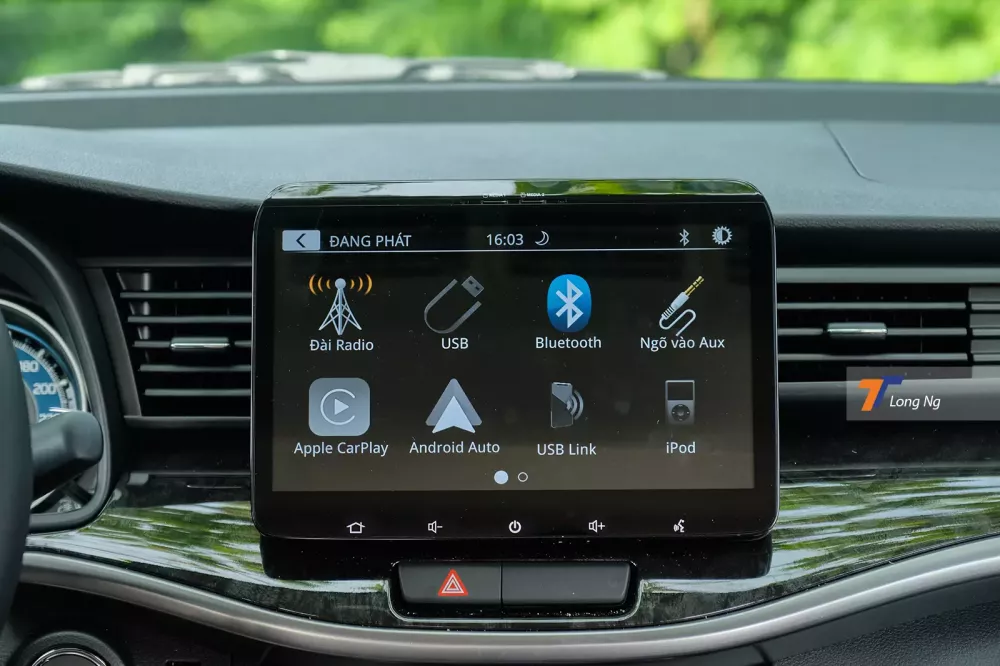
The 10-inch infotainment screen on the XL7 Hybrid is not new, and it is quite sharp and free from glare when driving in harsh sunlight.
The Suzuki XL7 Hybrid’s most significant advantage remains its spacious interior, as was evident in the Ertiga. The second row of seats offers ample legroom, comfortable cushions, and a deep recline, ensuring a pleasant journey even on long trips.
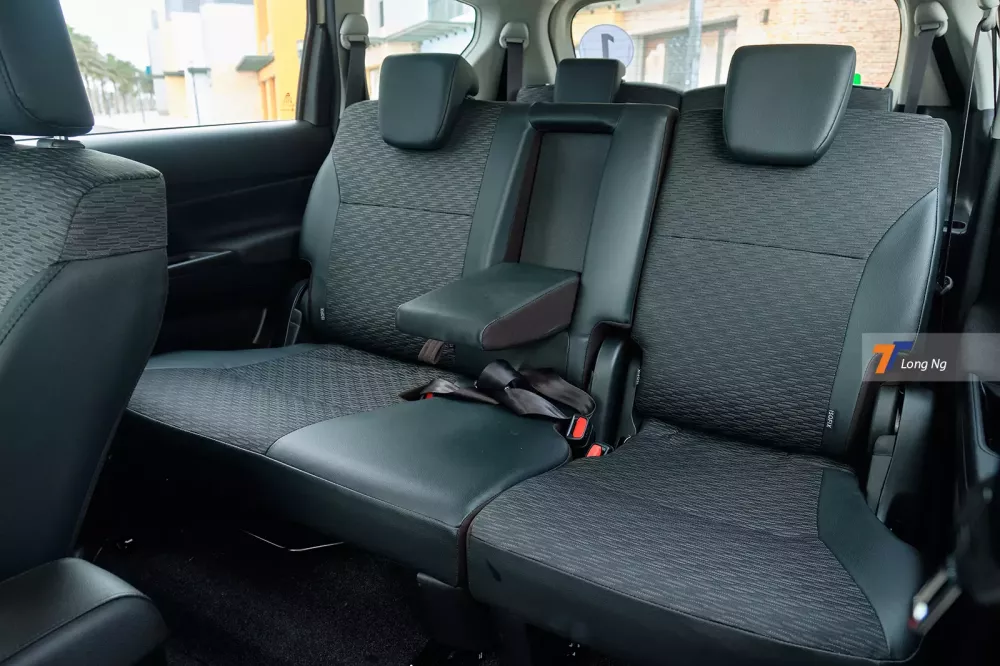
The second row of the Suzuki XL7 Hybrid has a center armrest but lacks a middle headrest.
The third row of the XL7 Hybrid also provides adequate space, as the seat cushions are slightly raised from the floor, eliminating the need for passengers to bend their knees excessively. Additionally, this row can be slightly reclined, and there are cup holders on both sides.
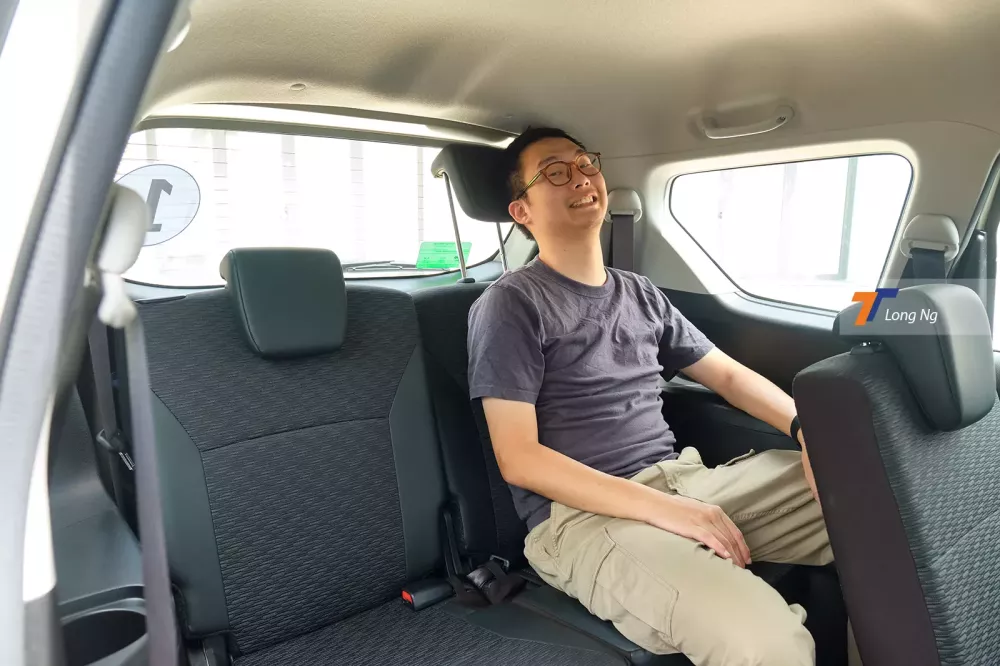
The person in the picture is over 1.8m tall, and he can still sit comfortably in the third row of the Suzuki XL7 Hybrid. The headroom is generous, allowing for ample headrest adjustment.
Overall, the Suzuki XL7 Hybrid’s interior accommodates seven people, making it suitable for many families. Here are some additional details about the interior:
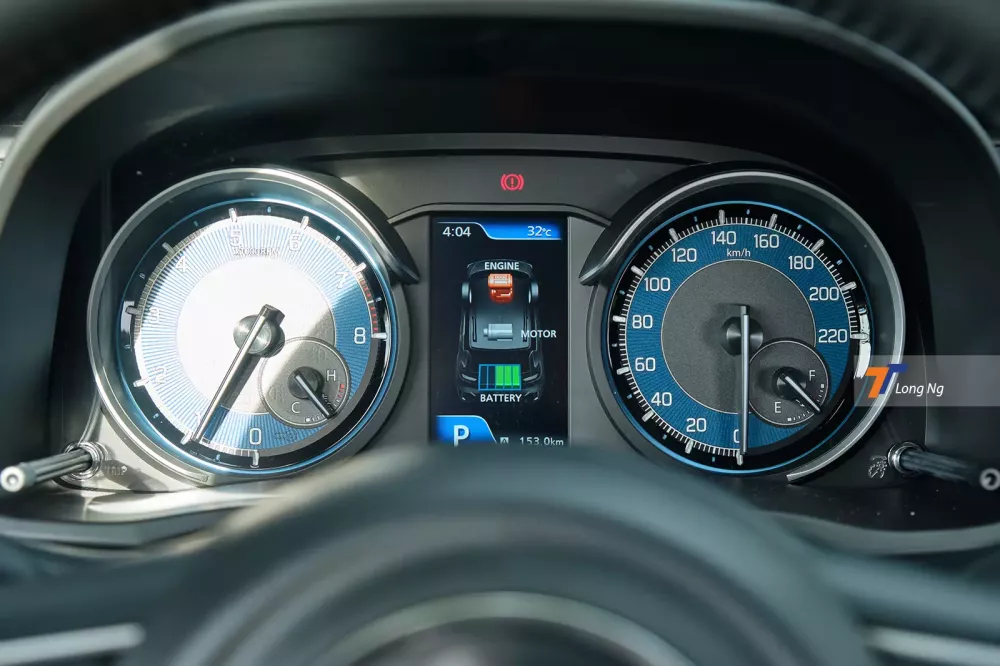
The instrument cluster combines analog dials with a TFT display and now includes information about the electric motor.
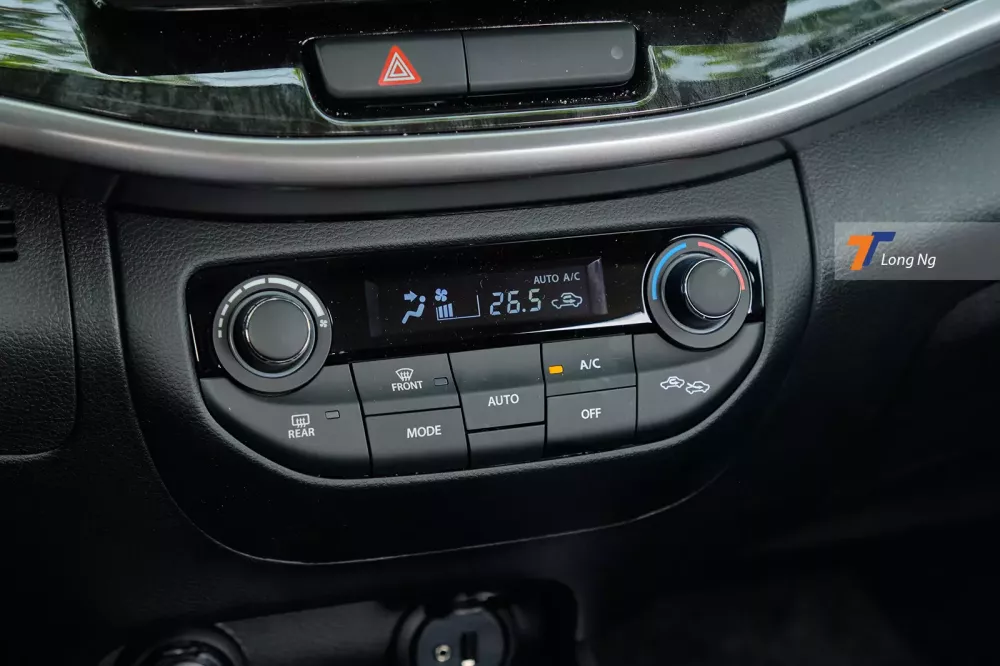
The automatic air conditioner cools the cabin relatively quickly.
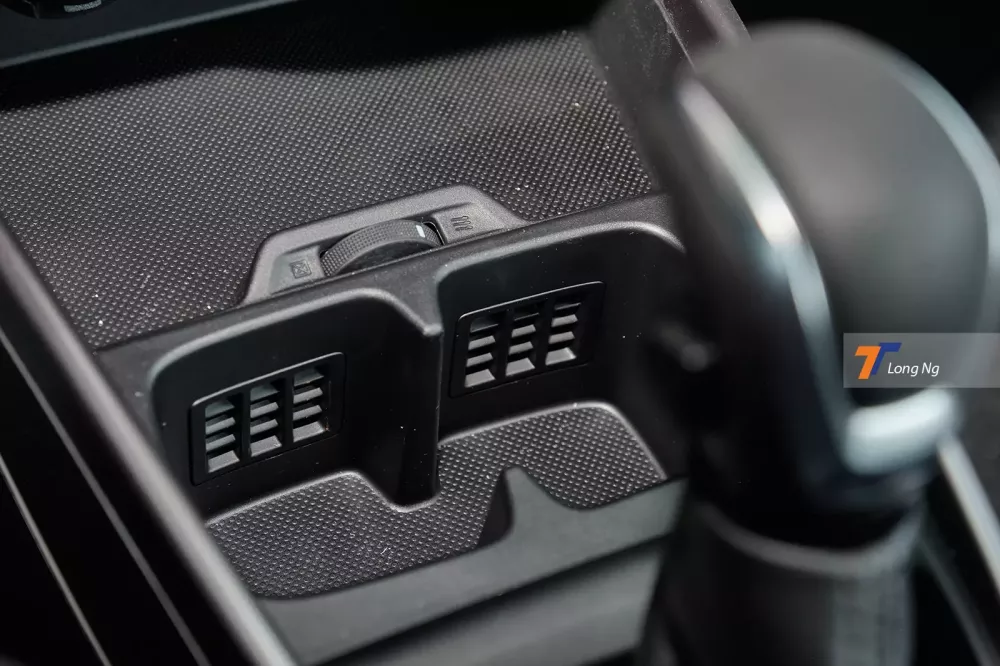
In front of the gear lever are two cup holders with cooling vents; they are not very deep but can keep drinks cool.

The front row has a center armrest.
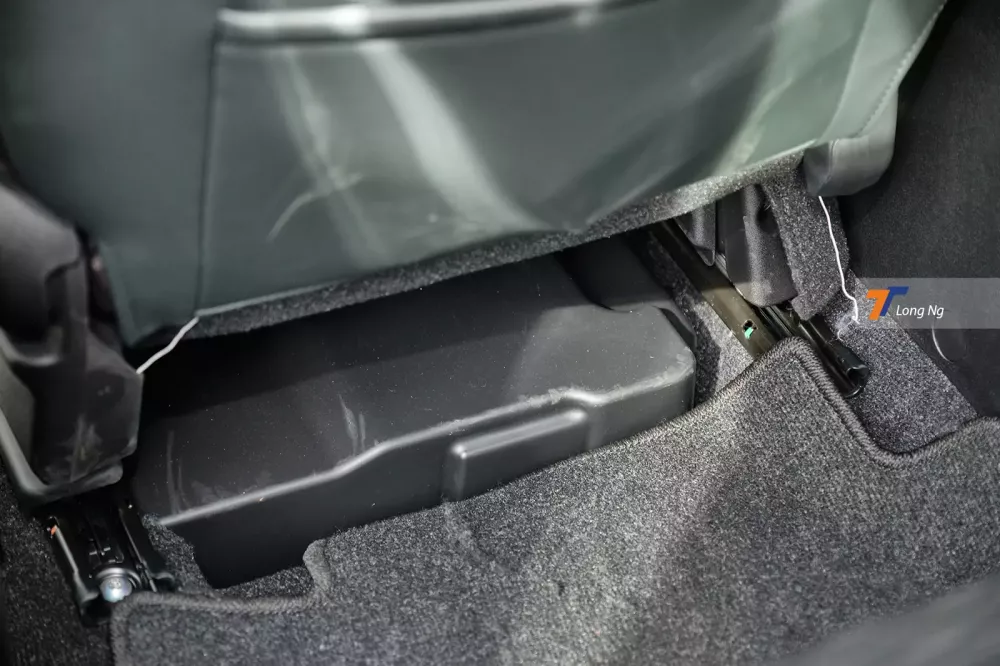
The vehicle’s battery pack is neatly tucked away under the driver’s seat.
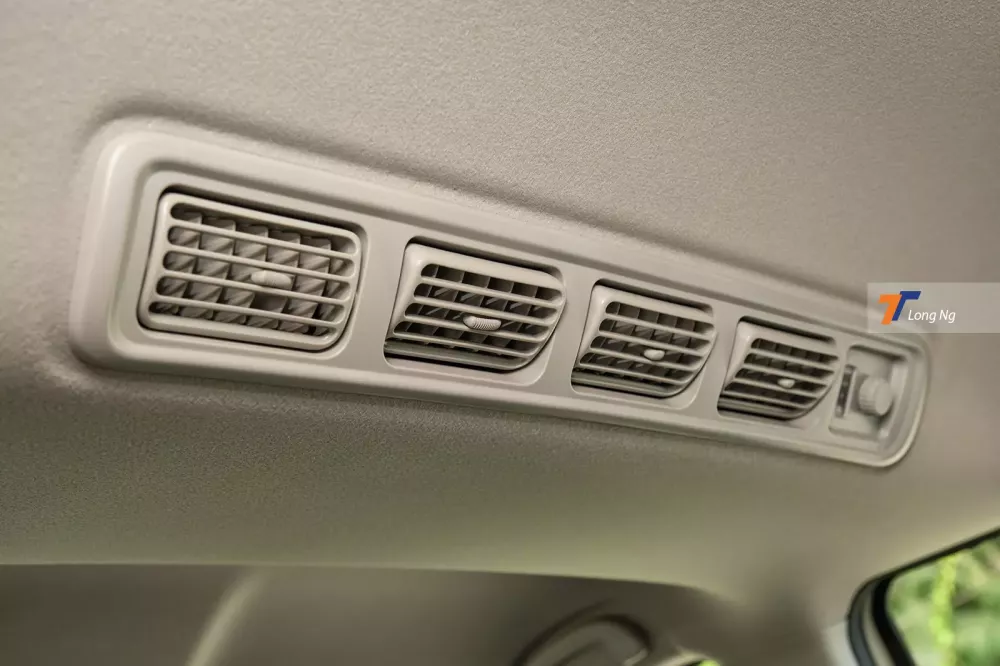
Air vents for the rear seats are located on the ceiling.
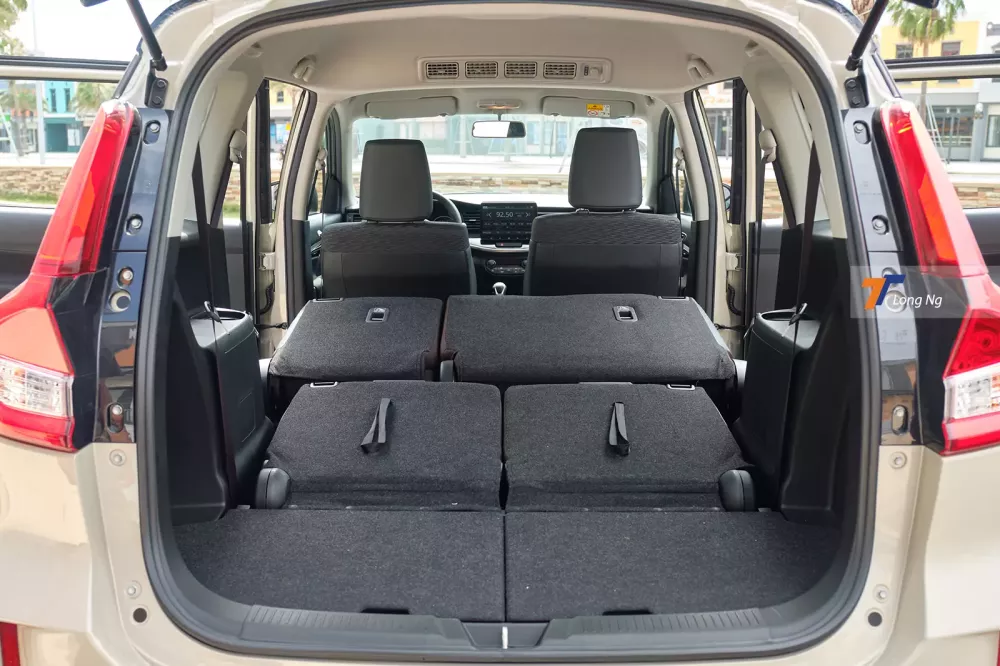
When necessary, users can fold down the second and third rows of seats flat to increase cargo space.
Unchanged Performance, Sufficient for the Majority
Despite its name, the Suzuki XL7 Hybrid is not a full hybrid but a mild hybrid, similar to the Ertiga Hybrid. Specifically, under the hood is still the 1.5L gasoline engine, combined with a generator that provides mild torque assistance and enables the vehicle to stop and start automatically.
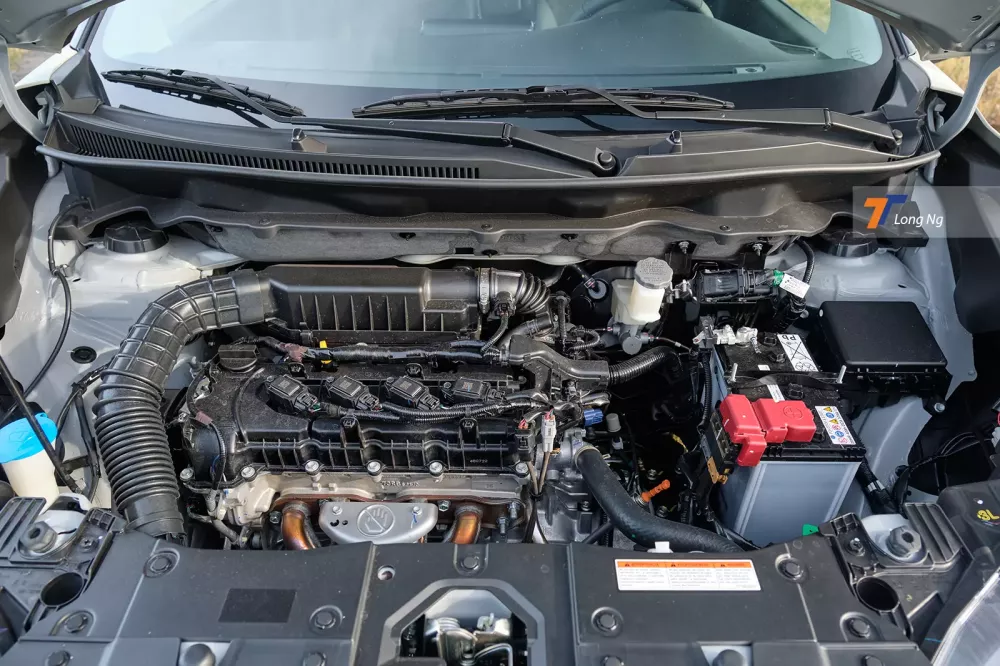
Combined with a four-speed automatic transmission and front-wheel drive, the engine produces a maximum output of 103 horsepower and 138 Nm of torque.
This means that the Suzuki XL7 Hybrid does not have an electric-only mode like other hybrid vehicles on the market. The addition of the generator helps to slightly improve fuel economy and makes the vehicle’s operation smoother, as the engine now has an automatic stop-start function.
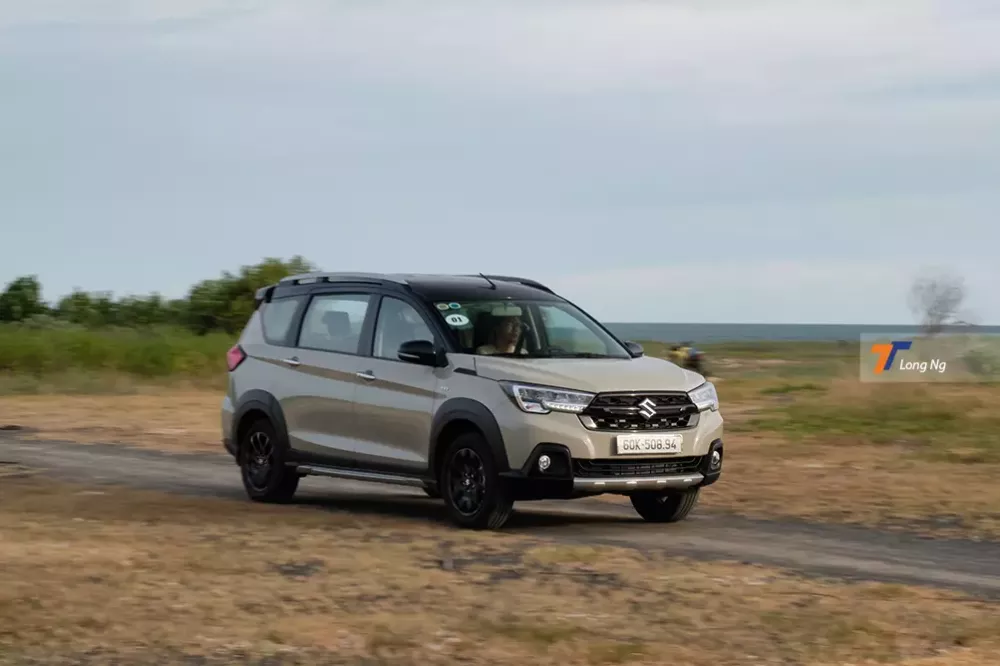
According to the manufacturer, the Suzuki XL7 Hybrid consumes 5.9 liters/100 km in a combined cycle, 5.36 liters/100 km in extra-urban conditions, and 6.81 liters/100 km in urban conditions.
In reality, the generator does provide some acceleration assistance, but it is not very powerful. Nonetheless, it is a significant improvement, especially considering that the vehicle’s price remains unchanged. The benefits of the electric motor also greatly enhance the performance of the underpowered engine and the few-speed transmission. Passenger comfort during acceleration will also be improved.
From the driver’s seat, the Suzuki XL7 Hybrid’s visibility is not ideal due to the thick A-pillars and the placement of the side mirrors, which are not mounted on the body like those of modern vehicles.
The Suzuki XL7 Hybrid’s noise insulation is just adequate. When traveling at high speeds, there is no wind noise from the sides, but there is some road noise coming from the chassis, which is a trade-off for a budget vehicle priced under VND 600 million.

The Suzuki XL7 Hybrid’s steering wheel is not as “loose” as those found in Korean cars, but it lacks precision. The weight is just right for the majority of drivers.
When the accelerator pedal is depressed, the vehicle takes time to accelerate due to the engine’s modest power, and the four-speed automatic transmission shifts slowly, especially when sudden acceleration is required from a stationary position. In situations where overtaking or rapid acceleration
The Ultimate Guide to the 30K-799.99 Super Sign: Unveiling the Mystery Behind the Auction Sensation.
The young millionaire’s photo showcases a stunning Lamborghini Aventador LP700-4 Roadster, now bearing the license plate 30K-799.99. This supercar has an intriguing history, having once been auctioned off for a staggering 4 billion VND, only to have the deal fall through and be put up for auction again at a reduced price of 1 billion VND.

